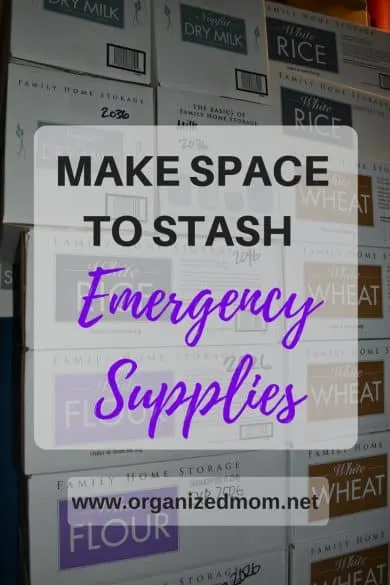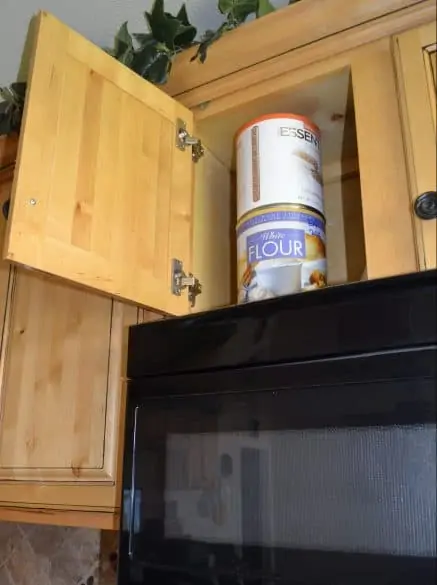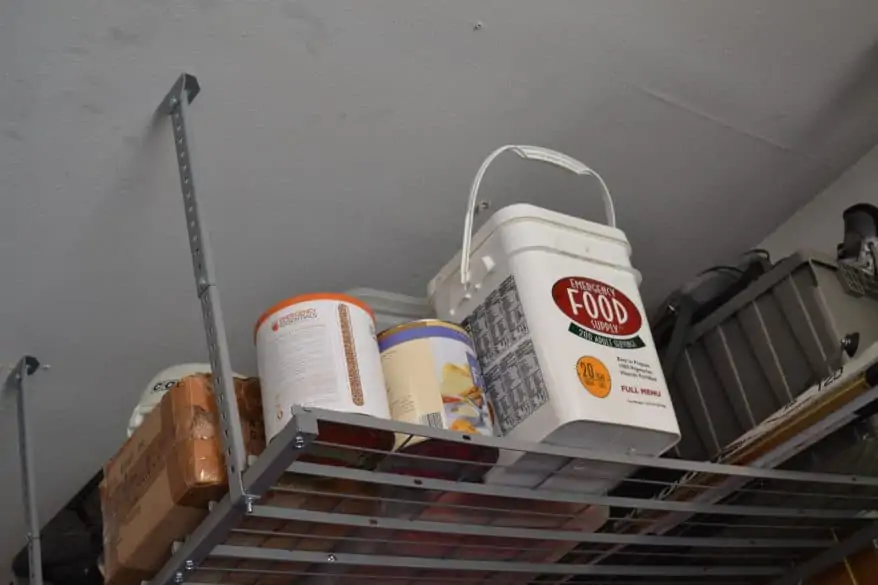September is National Preparedness Month. Do you have your food storage or emergency supplies ready in case of natural disaster or personal crisis?
Food storage is peace of mind. When a natural disaster or personal crisis strikes, having essential food items stockpiled can make or break the situation. You may be thinking:
“I’d love to store food and supplies, but I just don’t have space.”
Know that many individuals share the same reason for not stocking up, too. If you already feel like you live in a small space, the thought of making room for cans, buckets, barrels, and bottles can be discouraging.
It is ideal to keep food storage in a dry, cool space (between 50-75 degrees Fahrenheit). This will give it maximum shelf life.
Take a walk through your home and find some usable space.
- Start with the kitchen cupboards. Make sure you are utilizing all the space. If you see 6-8 inches of empty horizontal space, add another shelf to fill with canned goods. On the very top shelf is a great place for food storage because you don’t have to reach up there very often to move things around.

- Take a look at your pantry. Are there any bulky items just taking up space that can be condensed into smaller containers or disposed of?
- Try stacking on top of the fridge or microwave.
- Next up, closets. There may be some space on the ground to stack boxes or buckets of food, or again on the top shelf. If you have a closet or storage room big enough, consider hanging shelves from the ceiling.
- Under the bed is a great place for storage. You can make crates with wheels if you are handy, or buy plastic storage bins at any department store to place cans in. Depending on how high your bed is, you may even be able to put buckets underneath, and a bed skirt can hide all of it.
- Dressers and nightstands often have storage space.
- In many homes, there is space in the attic to use, but just be conscious of the temperature before you keep food up there. It would be a great place to store other emergency supplies, such as a tent, sanitation goods, and medical necessities.

With all of the spaces above, it would definitely be worthwhile to assess each and de-clutter. If an item hasn’t been used in the last year, consider getting rid of it to make room for something more valuable.
RealtyTrac, a real estate research firm, released a report in 2015 stating 43% of homes in America are at high risk of at least one type of natural disaster. If some type of catastrophe occurred where you live, would you have what you need?
Don’t wait until it’s too late.
What are you doing to prepare for emergencies?